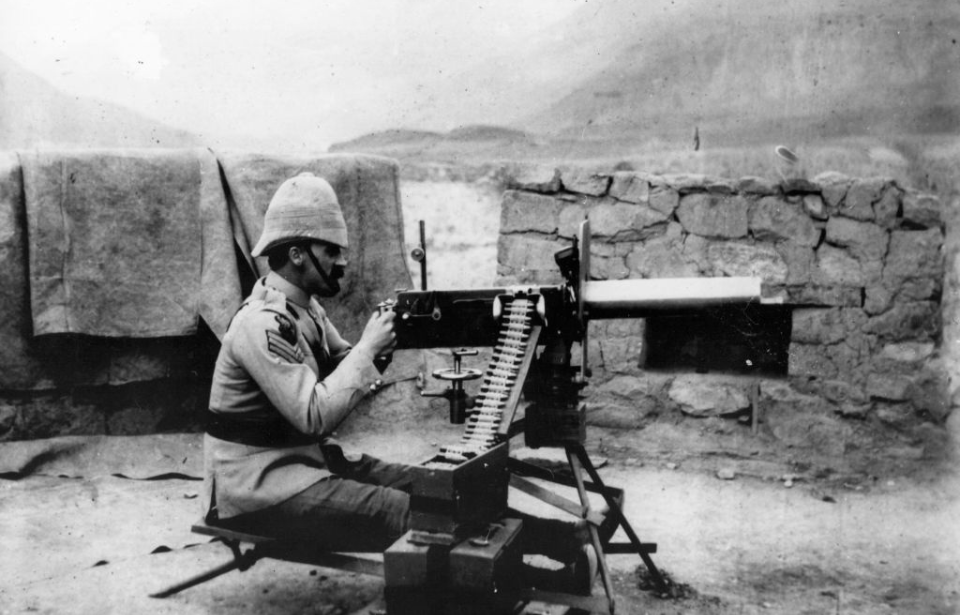The Gatling gun, created in 1861, was equipped by the Union Army during the American Civil War. This powerful weapon also saw use throughout the Spanish-American War, the Anglo-Zulu War and the Boshin War, among many other conflicts. An inventor by the name of Hiram Maxim thought he could improve upon the gun and his creation became a staple of the British Army.
Hiram Maxim was a prolific inventor
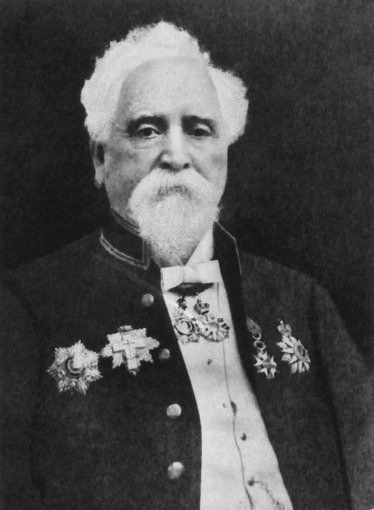
The Maxim gun was named for its inventor, Hiram Maxim. He’d created several items throughout his career, including a menthol inhaler for those suffering from asthma and hay fever; coffee substitutes; the first automatic fire sprinkler; a device that de-magnetized watches; and a curling iron. He even claimed to have developed the first-ever electric lightbulb, which led to several patent disputes between him and fellow inventor, Thomas Edison.
With 271 patents under his belt, you’d assume Maxim was happy with how his life of inventing had gone. However, he eventually grew frustrated with the process of patenting an idea and once remarked to the Times of London, “I was in Vienna, where I met an American whom I had known in the States. Hang your chemistry and electricity! If you want to make a pile of money, invent something that will enable these Europeans to cut each other’s throats with greater facility.”
Developing the Maxim gun
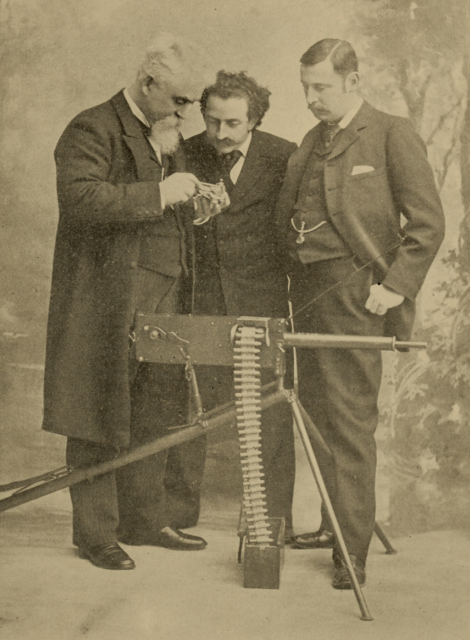
Cassier’s Magazine / Wikimedia Commons / Public Domain)
The inspiration for the Maxim gun’s action upon being fired came from a childhood memory, in which Hiram Maxim recalled the recoil of a rifle. With a desire to improve upon the popular Gatling gun, he began patenting the methods needed to make his gun the superior model. Before long, his concept of an automatic weapon was coming to fruition.
PBS explains, “Maxim’s innovation was to harness the recoil power of each bullet, a force strong enough to eject the used cartridge and draw in the next one. Structured in this way, the portable gun needed only one barrel to fire all of its bullets automatically. To maximize the gun’s effectiveness, Maxim also developed his own smokeless powder, cordite.
After much effort, Maxim was able to secure the funding needed to bring his concept to life. The first patents were filed in 1883, with the first test run of the new weapon done before an audience the following year.
Maxim gun specs.
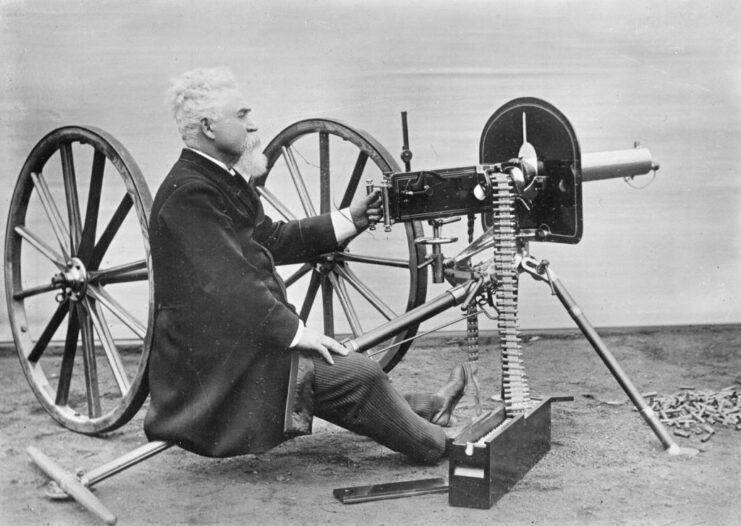
The Maxim gun was a water-cooled, recoil-operated weapon that was designed to fire between 550 and 600 RPM. It was far more efficient than its predecessors, thanks to Hiram Maxim’s 360-degree rotating cam, which was later simplified to a toggle lock. The gun was of a considerable size (42.5 inches in length and weighing 60 pounds), thanks to its water-cooled system, requiring about four crewmen to properly operate. While this system aided the rate of fire, it limited the gun’s flexibility in the field.
To adequately aim the weapon, it was equipped with an iron sight, and while the original design saw it mounted on wheels, it was later updated to fit atop a tripod. In terms of ammunition, the Maxim gun was capable of firing a multitude of rounds, including the common .303 British and .30-06 Springfield.
Seeing action before the outbreak of World War I
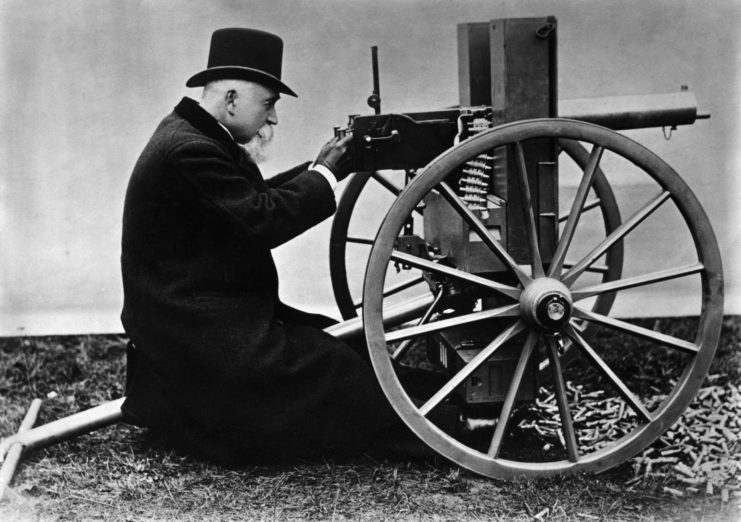
The first important British military figure to embrace the Maxim gun was Field Marshal Garnet Wolseley, 1st Viscount Wolseley, who purchased 120 units capable of firing the same ammunition as the Martini-Henry. Many in the Army were against machine guns at the time, due to their propensity to jam. Wolseley, however, was an ardent supporter of new military innovations and his embrace helped others, including outside governments, take notice.
Soon, the Maxim gun was ubiquitous throughout the British Empire, and the weapon’s power became the stuff of legend. It was said that, during the Battle of Bembezi in the First Matabele War, some 700 British troops were able to fight off 10,000 Matabele warriors with just five Maxim guns. Similarly, in the Battle of the Shangani, 5,000 warriors were unable to fight off 700 British soldiers equipped with the weapon.
With its successes during the First Matabele War, the Maxim gun saw increased use in combat, with higher-caliber versions being deployed. It was also purchased by other nations, including the Philippines and Russia, with the latter equipping the weapon for frontline use during the Russo-Japanese War. While the Japanese had previously shown interest in the Maxim gun, the decision had been made to, instead, go with the Hotchkiss machine gun.
Not only did the Maxim gun prove to be much more reliable than its predecessors, but it also created a psychological advantage. At times, the thought of the weapon tearing through an opposing army was enough to stop them in their tracks, especially when enemy combatants had nothing near as powerful in their arsenal.
Influencing weapons on the Western Front
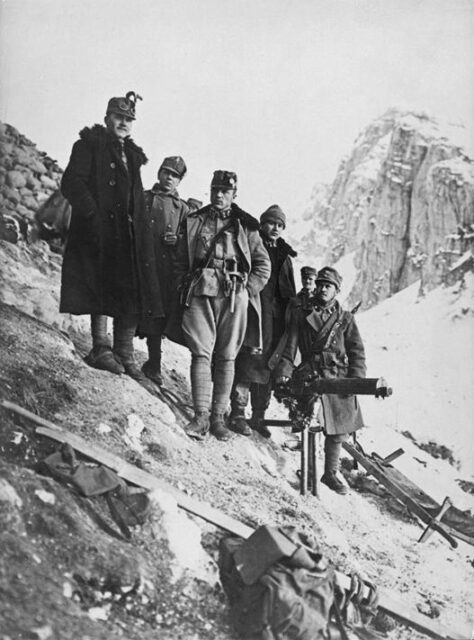
By the time World War I broke out, many countries had either purchased Maxim guns or developed their own machine guns. The weapons became commonplace during the conflict, greatly impacting its direction.
The version equipped by the British Army was an updated version of the Maxim known as the Vickers machine gun. Using the older weapon as its base, the Vickers was not only lighter and strengthened, but it also featured an inverted mechanism and the addition of a muzzle booster.
The German Maschinengewehr 08 (MG 08) and the Russian Pulemyot Maxima PM1910 (which has seen use during the Russo-Ukrainian War) were essentially copies of the original Maxim gun. While the US Army had equipped the weapon Stateside, it wasn’t deployed to the Western Front, with the Americans and their European Allies opting, instead, to equip Hotchkiss models in the field.
Lasting legacy of the Maxim gun
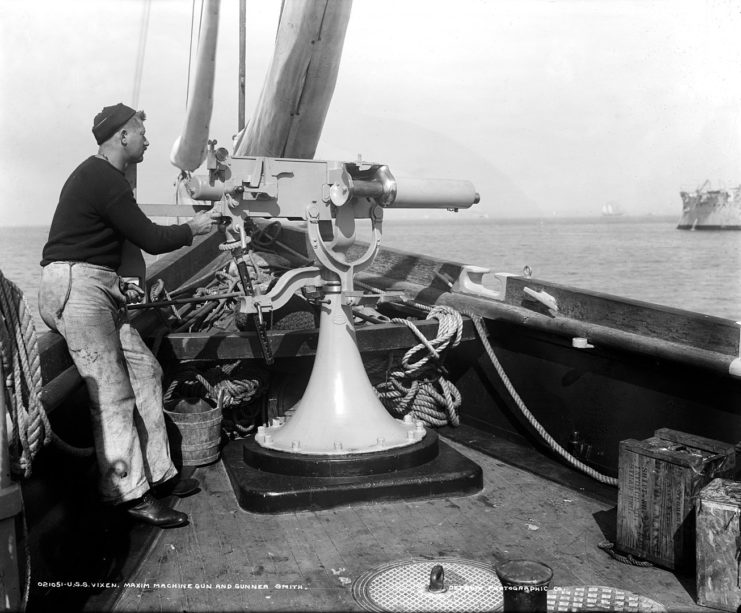
The Maxim gun had an incredible impact on 20th-century warfare and inspired several copycats. Vickers continued to improve upon Hiram Maxim’s original idea as technology improved, and the original concept, through various variants and upgrades, is still in service, albeit in a limited capacity.
More from us: AK-15: The Russian Assault Rifle That Traces Its Origins Back to the AK-47
During the development process, Maxim moved to England from the United States, becoming a naturalized citizen in 1899. Two years later, he was knighted. The inventor stopped working on weapons, however, after creating his famous machine gun, opting to spend his time in the aviation space, instead.
